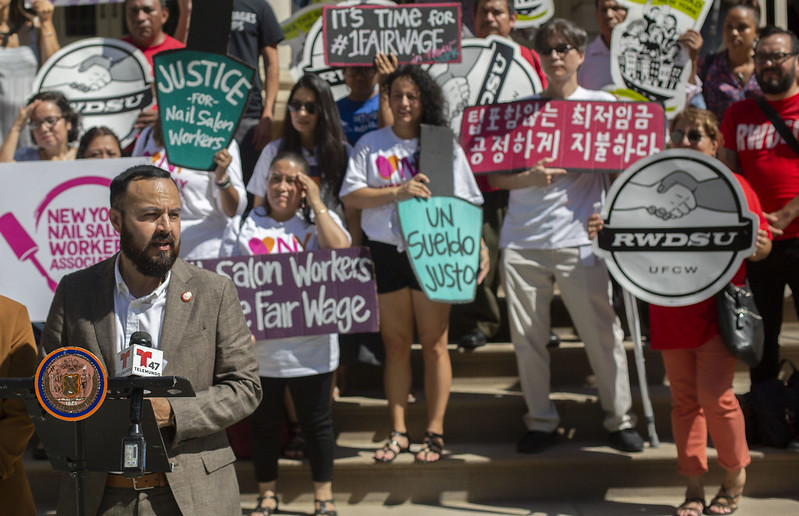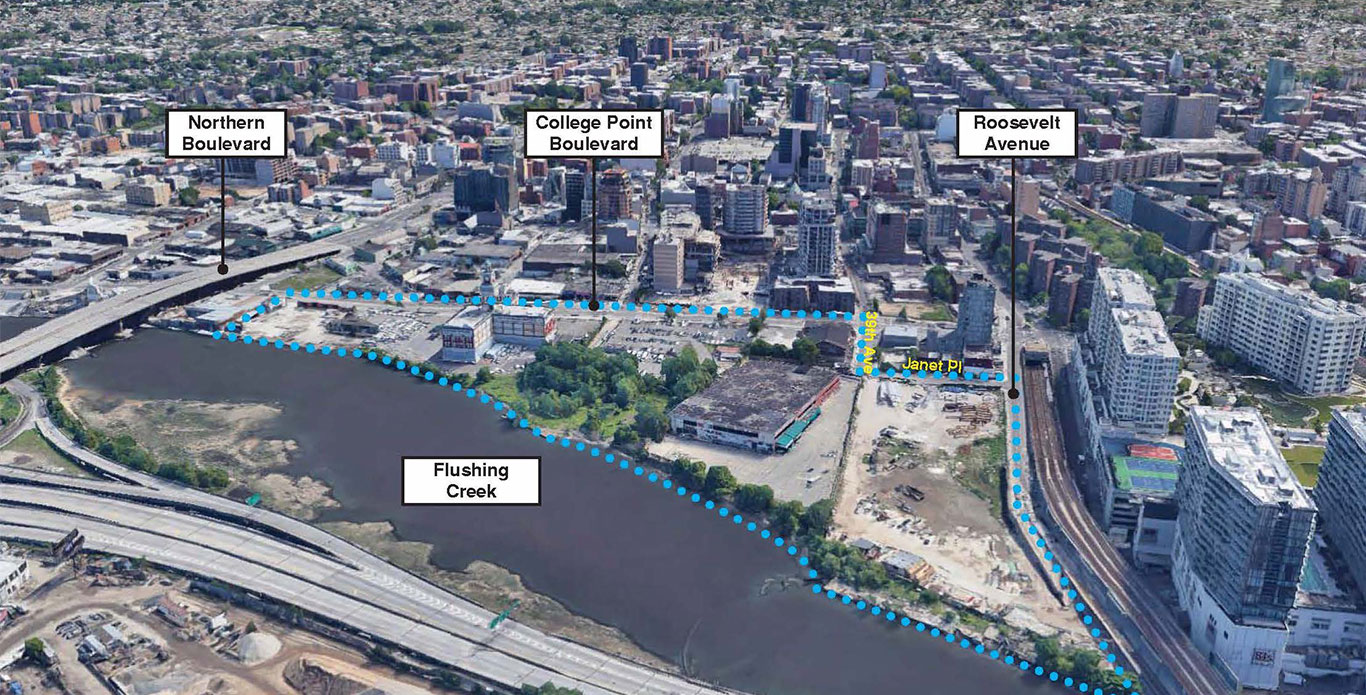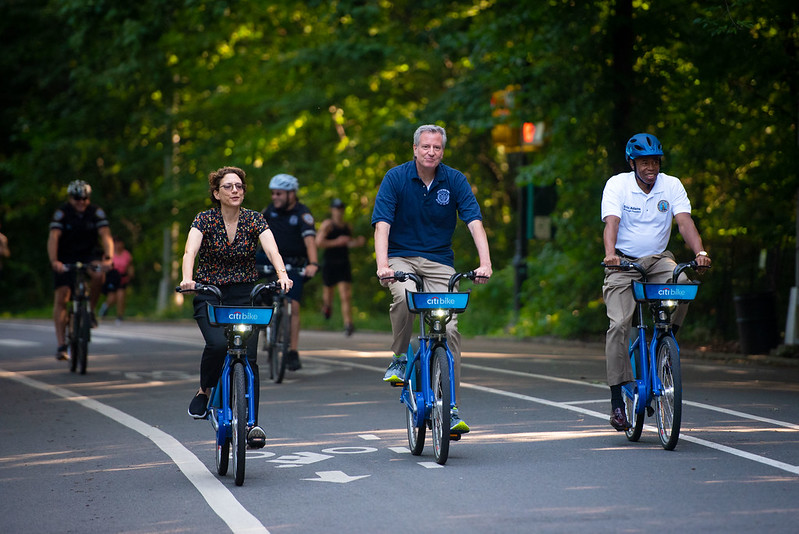We’re Not All The Same: Rethinking ‘The Latino Vote’

City Council Member Francisco Moya, the author (photo: John McCarten/City Council)
How many more elections until incumbents and newcomers in races across the country realize that we are not all the same?
“Speaking” the language or being designated Latino/Hispanic does not translate to our larger population sharing the same story or weighing issues with the same values.
According to Pew Research, a record 32 million Hispanics were projected to be eligible to vote in the United States in 2020, making up 13% of all eligible voters in the country. This is a growing population from all walks of life, of different races and ethnicities, with different religious beliefs, multigenerational, monolingual, bilingual, trilingual—and the list goes on.
And while Latinos voted for Biden by a +43-point margin according to the American Election Eve 2020 Survey, campaigns need to stop taking our votes for granted or assume that we are a bloc.
I urge candidates in electoral races across the country to not generalize the Latino population and not assume they will automatically have our vote.
First, to truly discern the communities that exist within our larger population, meet us where we are by diversifying your campaign teams, partnering with groups that are on the ground, and understanding the issues that are a priority. Do this across each pocket of our country.
One clear lesson from this year’s election is the Herculean effort by Latino-led organizations and community activists around the country—from Make the Road NY to LUCHA in Arizona and Mi Familia Vota across battleground states like Nevada—to educate and mobilize voters in the Latino electorate. This was evident in the results we saw in swing states from the top to the bottom of the ballot.
Take for instance here in New York. Many of us that grew up or live in New York City, specifically in Queens, are afforded the opportunity to interact with the different communities that represent us, appreciate the intricacies of our cultures, and experience the inequities. Much of what you’re reading about who makes up “the Latino vote” around the country—the Ecuadorian, Puerto Rican, or Dominican voter in New York; the Cuban, Puerto Rican, or Colombian voter in Miami; the Mexican or Salvadorian voter in Los Angeles or Texas—is to some extent reflected here, in New York City, from neighborhood to neighborhood.
There is so much to learn and know about our diverse communities, but you have to try.
Second, double down on the issues. According to Pew Research, the economy, health care, and COVID-19 response are top issues for Latino voters. Not surprising. My City Council district was the epicenter of the epicenter of the novel coronavirus outbreak, and we saw firsthand the disproportionate health and economic impact on Latinos. This has been of great concern among those who lost loved ones, lost income, who have small businesses, and who have to put food on the table for their families.
Jobs and the economy have been focus issues on both sides of the political aisle. In Florida and Texas, like elsewhere, voters had legitimate economic concerns related to keeping small businesses afloat, saving jobs, food insecurity, and loss of personal wealth. For Puerto Ricans, the second largest population within the Hispanic eligible voter population in Florida, the economic crisis and the devastation in Puerto Rico following Hurricane Maria were prevalent concerns. Trump’s campaign doubled down on the American Dream vs. a socialist nightmare, and clearer economic messaging alongside disinformation helped make headway with capturing part of the Latino vote including Cuban Americans.
Which brings me to the next point: invest time and resources to appropriately engage voters in the Latino electorate that span generations, experiences, and consumption habits. The young Latino that just turned 18, the naturalized citizen, the first-generation citizen, the voter whose family has been in the U.S. for generations. Each of their stories, where they live, and how they consume information will unequivocally vary, and will determine who they support.
Address early and at every turn, and at a community level, the issues that are concerning voters in the Latino electorate. If a voter is concerned about keeping their small business afloat, show how you’re addressing that. For example, I introduced legislation to cap delivery app fees to protect mom and pop shops during the pandemic. If worker protections are a priority, address that (after all, Florida resoundingly supported a $15 minimum wage despite its presidential vote going for Trump). I’m proud to have championed worker protections, from construction sites to nail salons, and will continue to do so because these are issues important to my constituents and New Yorkers across the city. They are also important to working people across the country.
Engage different communities often and consistently, and factor in groups that are relatively new to voting in the United States.
The issues that we in the larger Latino community are prioritizing are not simply “Latino issues,” but they impact our population the most, which we’ve seen exacerbated by this pandemic. Races across the country not only need to have the communities within our larger voting bloc represented, there also has to be a real commitment to reducing racial and ethnic inequalities.
As we go into the races being waged next year, voters in the Latino electorate will be key deciding factors in choosing the next Mayor of New York City, and the election of Governors in New Jersey and Virginia—all three of which include the multiplicity of our population.
The Latino electorate is heterogeneous in composition and united in power so don’t ghost us until the eve of the next election—whether mayoral, gubernatorial, presidential, or otherwise. Court us early and don’t make promises you can’t keep.
***
City Council Member Francisco Moya represents the New York City Council’s 21st District, which encompasses East Elmhurst, LeFrak City, parts of Jackson Heights, and his native Corona. He chairs the Subcommittee on Zoning and Franchises and is vice co-chair of the Black, Latino, and Asian Caucus (BLAC). On Twitter @FranciscoMoyaNY.
***
Have an op-ed idea or submission for Gotham Gazette? Email This email address is being protected from spambots. You need JavaScript enabled to view it.
Letter to the Editor: Flushing Waterfront Follies

The current site of the proposed Special Flushing Waterfront District
To The Editor:
In “Separating Fact and Fiction About the Special Flushing Waterfront District,” published earlier this week and in part an apparent response to my criticism of the Special Flushing Waterfront District (SFWD) in these pages, the property owners and applicants of the SFWD make one fact crystal clear, and that is that the developers do not represent community interests.
The developers continue to exaggerate the magnanimity of the proposed open space and waterfront access, which are the primary public benefits of the SFWD given the paltry number of proposed affordable housing units.
In a recent study based on information provided by the developers’ environmental assessment statement, the Municipal Art Society (MAS) produced illustrations depicting minimal public space and a diminished pedestrian experience due to the massive building base walls of SFWD’s proposed towers. Rather than the 6.6 acres of public open space as the developers claim, the MAS found the SFWD will create “just over three acres of new open space”. Moreover, MAS concluded, “only 0.3 percent of the open space under the proposal is being provided voluntarily.”
The SFWD applicants’ disdain for advocates, who argue that private developers seeking relief from land use regulations should provide public benefit to the surrounding community, extends to elected officials. It is hard to ignore the developers’ sarcastic instruction to those who “want to advance more affordable housing” to contact City Council Member Francisco Moya. Moya, chair of the Zoning Subcommittee, was featured prominently in several articles admonishing the developers for not doing enough to address the city’s acute affordable housing crisis.
Moya and 11 of his colleagues clearly heard and agree with community concerns, as shown in an official statement issued the evening before a scheduled Zoning Subcommittee vote on the SFWD was postponed. The statement noted that the SFWD “ignores the real, urgent needs of the Flushing community” and approval of an “application without deep community benefits” would be “irresponsible” and “a grave mistake."
Rather than heed the advice of these elected officials, the developers wrote an opinion piece that sought to malign “the opposition,” including the MinKwon Center for Community Action, a nationally recognized, Flushing-based immigrant rights and social justice organization. The developers’ warning that the MinKwon Center is not “the town crier of Flushing,” however, fails to diminish the city-wide mobilizations its organizers helped to catalyze to counter the fiction that the proposed SFWD will benefit Flushing’s working class community.
Sincerely,
Tarry Hum
Professor and Chair of the Urban Studies Department, Queens College, City University of New York. On Twitter @TarryHum.
***
Have an op-ed idea or submission for Gotham Gazette? Email This email address is being protected from spambots. You need JavaScript enabled to view it.
Bike Culture is Vital and Here to Stay; Now Let’s Make New York a Bike City for All

Mayor de Blasio on a CitiBike (photo: Michael Appleton/Mayoral Photography Office)
New York City is a Bike City in disguise. Bicycles are part of city culture, whether we recognize it or not. Let’s give bike culture its rightful place by building safe, protected streets. Now.
Becoming a Bike City is not taboo. It is not radical. It is about necessity and safety -- for essential delivery workers, for commuters, and, increasingly, for students traveling to and from school, sometimes on their own bikes and sometimes on their parents’. Bike culture supports our economy and our working class. It helps our environment. It supports equity, inclusiveness, and accessibility. This is New York City, and we need options.
There is no denying that bike culture surged in 2020 and the city’s transportation safety infrastructure was woefully inadequate to keep up. When stay-at-home orders were announced in March, essential delivery workers reported to work with their bicycles, e-bikes, and scooters. In order to work, delivery workers rode among cars, trucks, busses, and vans amidst a disjointed, incomplete, and unprotected bike lane network.
Sadly, the inadequacy is a matter of life and death.
On November 12, 35-year-old essential delivery worker Alfredo Cabrera Liconia was tragically struck and killed when a truck driver turned widely into the bike lane at Astoria Boulevard and Crescent Street in Astoria, Queens. Weeks before, federal, state, and local elected officials signed onto a letter urging the city Department of Transportation to install metal bollards along the Crescent Street bike lane, and along similar intersections, to prevent this exact type of tragedy. Permanent fixtures prevent drivers from entering bike lanes.
Earlier this year, on September 2, 50-year-old cyclist Salvador Chairez-Rodriguez tragically collided with an MTA bus in Woodside, Queens near 51st Street and 31st Avenue. There are limited bike lanes near that intersection but none are protected. In the immediate area are Bryant High School, PS 151, Woodside Houses, a senior center, and the Boulevard Gardens community. Creating a Safe Bike City is not solely for adult rider convenience. It means safety for all of us.
New York City’s evolution into a Bike City is happening in real time and we deserve a thoughtful, coordinated cycling and pedestrian infrastructure in real time. This is how we commute, how we exercise with our families, and how we connect with others in open spaces while maintaining social distance. It’s also how we express our right to protest. Alternatives to cars, busses, and subways have been healthy equalizers as we collectively avoid exposure to the novel coronavirus in confined spaces. However, more bikes and pedestrians without proper infrastructure means higher risk of injury. Our infrastructure needs are immediate.
I know the dangers of our roads first-hand. I have biked in all five boroughs for years and I’ve biked nearly every street in the Queens City Council district I hope to represent. I've been hit by cars, nudged, and "doored." I've been spat at, cursed at, and I've been stuck behind idling trucks. Many cyclists contend with this, yet cycling is not going away. Walking is not going away. We deserve safe options and the city must adapt.
New York does not have to be behind the ball here. We could be a standard bearer that inspires other cities and states that have yet to get up to speed to embrace varied, multimodal transportation. In this moment, the de Blasio administration should use what little time it has left to lay the foundation for a Safe Bike City in 2021.
The Department of Transportation should install safety fixtures that fully protect cyclists by preventing cars, busses, and trucks from entering bike lanes. Install metal bollards, Qwick Kurbs, physical barriers, and traffic signals to protect existing bike lanes. Build safe unloading ports for trucks to make deliveries and keep them away from bike lanes and CitiBike ports. Coordinate CitiBike expansion proposals, like the one currently debated in Astoria, Sunnyside, and Woodside, with installing new bike lanes to protect the expanded ridership.
The city should fully protect its bridges for cyclists and pedestrians. The Queensborough Bridge, for example, should be on the fast-track to re-open the south outer roadway for pedestrian-only passage, and to dedicate the north outer roadway to cyclists. Instead, it feels like the city is waiting for the next tragedy.
In 2021, we will have an opportunity to elect a new Mayor and City Council that will truly build a safe, affordable, equitable, and inclusive city. We will embrace a diverse transportation network that builds a more accessible and Safe Bike City -- for workers, for students, for all of us. But we shouldn’t have to wait for new elected officials. Give bike culture its rightful safe place in New York City culture now.
***
Alex Rias is a City Council candidate in District 26 in Queens and a long-time commuter cyclist in all five boroughs. On Twitter @alexrias.
***
Have an op-ed idea or submission for Gotham Gazette? Email This email address is being protected from spambots. You need JavaScript enabled to view it.




